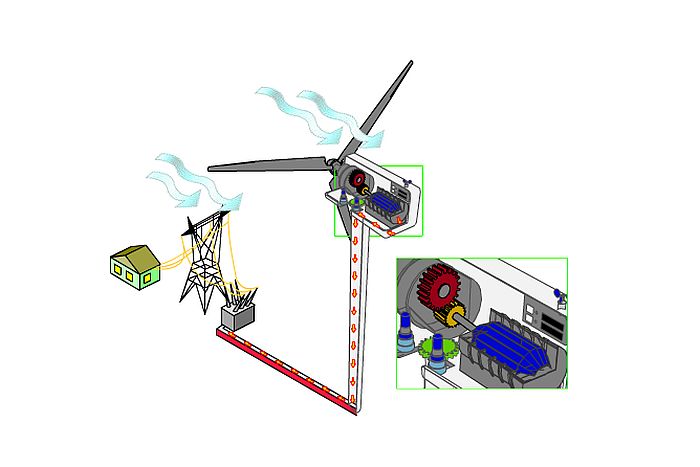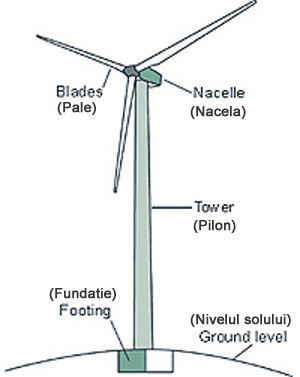How Wind Turbines Work
Green energy is gaining ground these days as we are more and more concerned about the impact of conventional energy producing means on the surrounding environment. Early this year, a news piece made the headlines in Germany and around the world announcing for the first time in its history the renewable energy had the majority contribution to the country’s internal use. And since wind turbines play a great role in these efforts, let’s now take a look at how a wind turbine work.
Simply stated, a wind turbine works the opposite of a fan. Instead of using electricity to make wind, like a fan, wind turbines use wind to make electricity. The wind turns the blades, which spin a shaft, which connects to a generator and makes electricity. View the wind turbine animation to see how a wind turbine works or take a look inside.
Wind is a form of solar energy and is a result of the uneven heating of the atmosphere by the sun, the irregularities of the earth’s surface, and the rotation of the earth. Wind flow patterns and speeds vary greatly and are modified by bodies of water, vegetation, and differences in terrain. Humans use this wind flow, or motion energy, for many purposes: sailing, flying a kite, and even generating electricity.
The terms wind energy or wind power describe the process by which the wind is used to generate mechanical power or electricity. Wind turbines convert the kinetic energy in the wind into mechanical power. This mechanical power can be used for specific tasks (such as grinding grain or pumping water) or a generator can convert this mechanical power into electricity.

How wind turbines work – simple blueprints

Modern wind turbines fall into two basic groups: the horizontal-axis variety and the vertical-axis design. Horizontal-axis wind turbines typically either have two or three blades. These three-bladed wind turbines are operated “upwind,” with the blades facing into the wind. Wind turbines can be built on land or offshore in large bodies of water like oceans and lakes.
Utility-scale turbines range in size from 100 kilowatts to as large as several megawatts. Larger wind turbines are more cost effective and are grouped together into wind farms, which provide bulk power to the electrical grid. In recent years, there has been an increase in large offshore wind installations in order to harness the huge potential that wind energy offers off the coasts.
Single small turbines, below 100 kilowatts, are used for homes, telecommunications dishes, or water pumping. Small turbines are sometimes used in connection with diesel generators, batteries, and photo-voltaic systems.
Sources: Energy.gov, Eoliene.eu, Lpelectric.ro















